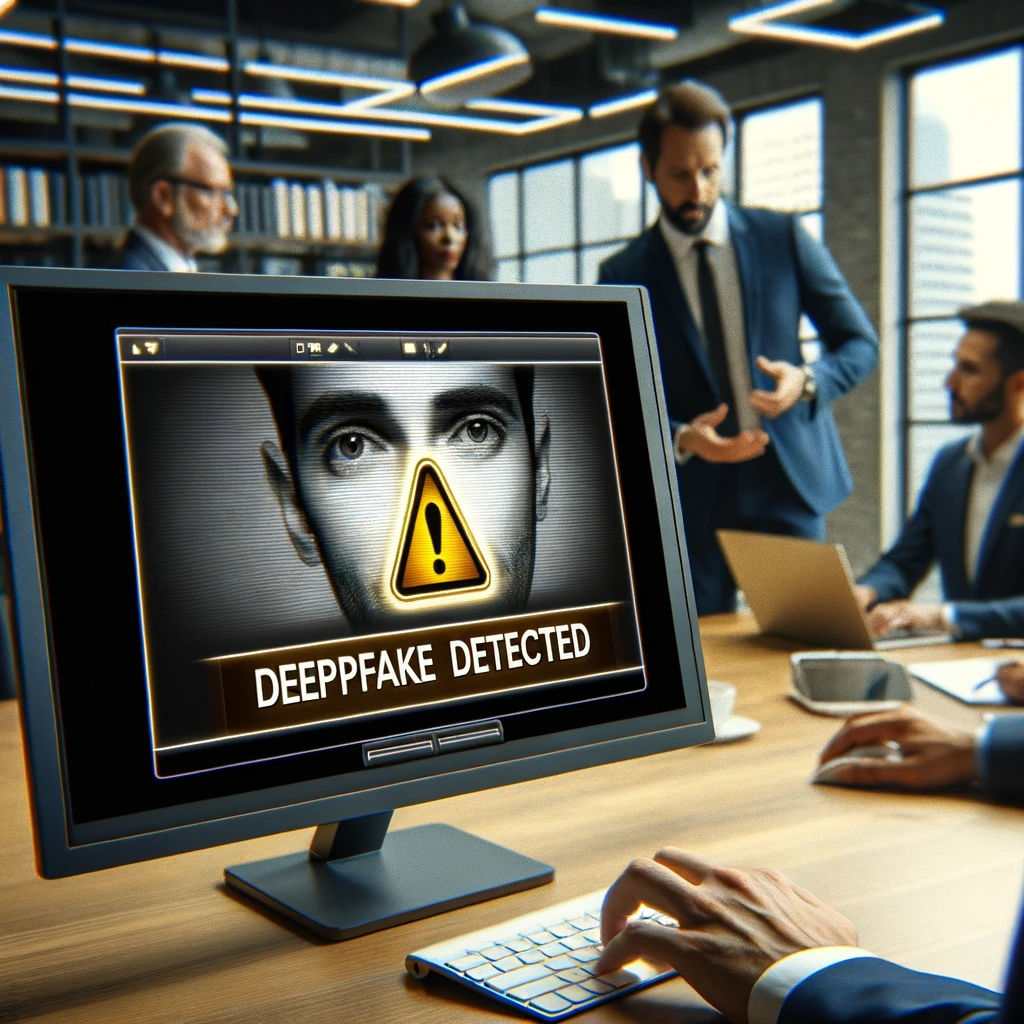Deepfake technology, which uses artificial intelligence to create hyper-realistic but fake videos and audio recordings, has rapidly advanced in recent years. While the technology has many legitimate applications, it also poses significant risks, especially to businesses. This blog post explores the threat of deepfake technology, recent incidents, and effective strategies businesses can employ to protect themselves.
Understanding Deepfake Technology
Deepfakes are created using machine learning algorithms, specifically generative adversarial networks (GANs), to manipulate or generate images, videos, and audio. The results can be indistinguishable from real footage, making it possible to fabricate realistic yet false content that can be used for malicious purposes.
The Threat of Deepfakes to Businesses
- Corporate Espionage:
- Deepfakes can be used to impersonate company executives or employees, facilitating corporate espionage and the theft of sensitive information. For example, a deepfake video of a CEO might be used to manipulate stock prices or influence business decisions.
- Fraud and Scams:
- Cybercriminals can use deepfakes to conduct fraud, such as creating fake video calls or audio messages that appear to come from trusted sources, tricking employees into transferring funds or divulging confidential information.
- Reputation Damage:
- Malicious actors can use deepfakes to create damaging and false content about a company or its executives, leading to reputational harm and loss of customer trust.
- Social Engineering Attacks:
- Deepfakes can enhance social engineering attacks by making phishing and other deceptive tactics more convincing. A deepfake video of a trusted partner or vendor can easily trick employees into revealing sensitive information.

Recent Incidents: A Growing Concern
One notable incident involved a UK-based energy firm where cybercriminals used deepfake audio to impersonate the CEO and instruct an executive to transfer €220,000 to a fraudulent account. The executive complied, believing the voice to be genuine, leading to a significant financial loss for the company.
Another example is the spread of deepfake videos during political campaigns, where fabricated content was used to mislead voters and manipulate public opinion, demonstrating the potential for deepfakes to influence large audiences and create widespread misinformation.
Strategies to Protect Your Business
- Implement Verification Processes:
- Multi-Factor Verification: Implement multi-factor verification processes for any financial or sensitive transactions. This includes verifying requests through multiple channels, such as phone calls and in-person confirmations.
- Identity Verification Tools: Use identity verification tools that can detect and analyze deepfake content, ensuring the authenticity of video and audio communications.
- Employee Training and Awareness:
- Security Awareness Programs: Conduct regular training sessions to educate employees about the risks associated with deepfake technology and how to recognize suspicious content.
- Phishing Simulations: Include deepfake scenarios in phishing simulations to prepare employees for potential deepfake-enabled attacks.
- Deploy Advanced Detection Technologies:
- AI-Based Detection Tools: Invest in AI-based detection tools that can identify and flag deepfake content. These tools analyze various aspects of video and audio files to detect inconsistencies and signs of manipulation.
- Behavioral Analytics: Implement behavioral analytics to monitor and detect unusual behavior patterns that may indicate a deepfake attack.
- Strengthen Communication Protocols:
- Secure Communication Channels: Use encrypted and secure communication channels for sensitive discussions and transactions. Encourage employees to verify any unexpected or unusual requests through secure means.
- Internal Policies: Develop and enforce internal policies that outline procedures for verifying the authenticity of communications, especially those involving financial transactions or sensitive information.
- Monitor and Respond to Threats:
- Threat Intelligence: Stay informed about the latest developments in deepfake technology and emerging threats. Use threat intelligence services to monitor for potential deepfake attacks targeting your industry.
- Incident Response Plan: Develop a comprehensive incident response plan that includes specific steps for addressing and mitigating deepfake-related incidents.
Conclusion
Deepfake technology presents a growing threat to businesses, requiring proactive and comprehensive security measures. By implementing robust verification processes, educating employees, deploying advanced detection technologies, strengthening communication protocols, and monitoring threats, businesses can protect themselves against the risks posed by deepfakes.
Stay vigilant and prioritize cybersecurity—protecting your business from deepfake technology is crucial for maintaining trust and security in the digital age.
About the Author
Brent Raeth is a cybersecurity expert with over 20 years of experience in the industry. He specializes in helping businesses develop and implement robust cybersecurity strategies to protect against emerging threats.
Contact Information
For more information on how to protect your business from AI-powered phishing attacks, contact CatchMark Technologies at https://catchmarkit.com/contact-us/.

